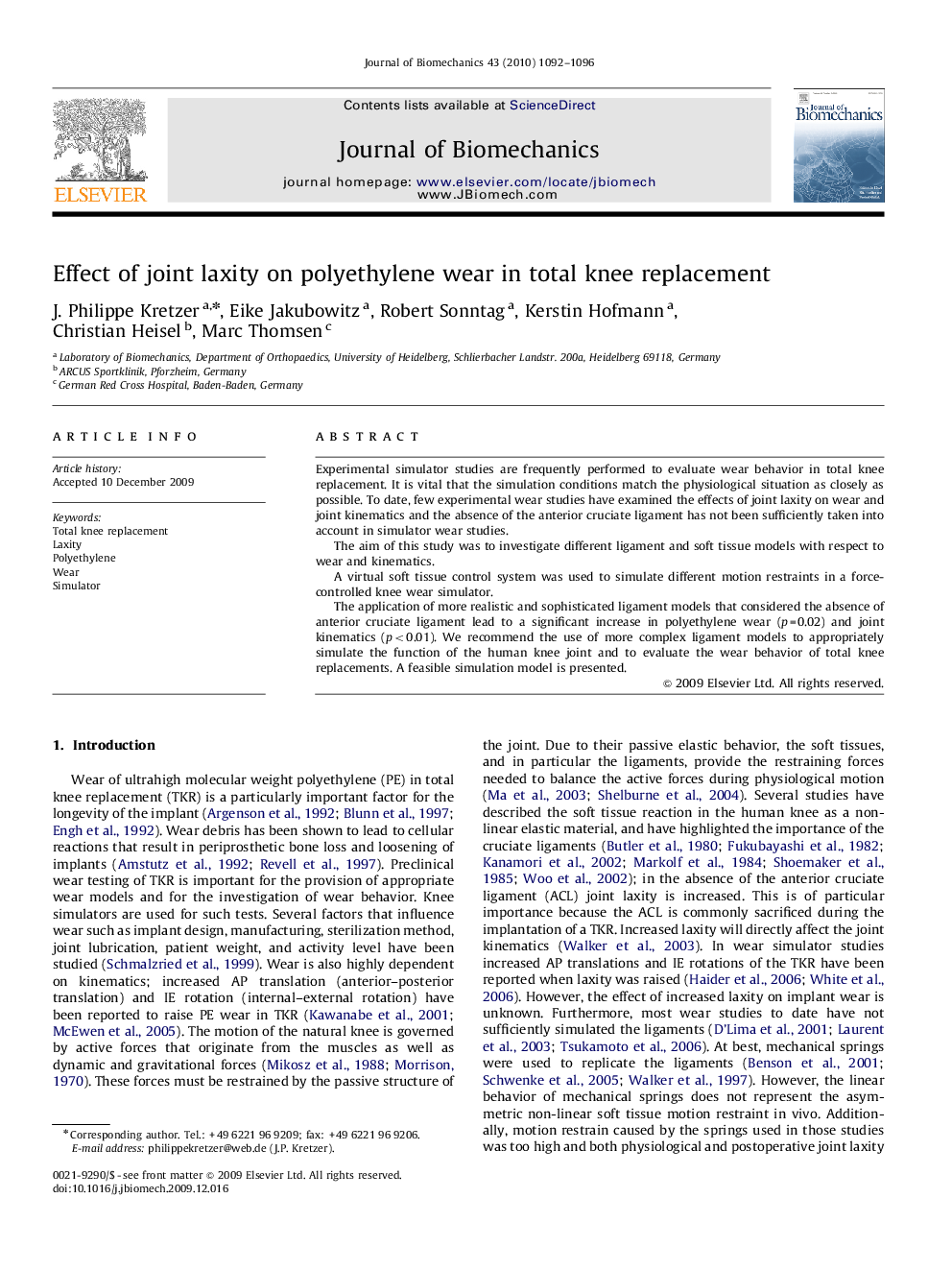| Article ID | Journal | Published Year | Pages | File Type |
|---|---|---|---|---|
| 873794 | Journal of Biomechanics | 2010 | 5 Pages |
Experimental simulator studies are frequently performed to evaluate wear behavior in total knee replacement. It is vital that the simulation conditions match the physiological situation as closely as possible. To date, few experimental wear studies have examined the effects of joint laxity on wear and joint kinematics and the absence of the anterior cruciate ligament has not been sufficiently taken into account in simulator wear studies.The aim of this study was to investigate different ligament and soft tissue models with respect to wear and kinematics.A virtual soft tissue control system was used to simulate different motion restraints in a force-controlled knee wear simulator.The application of more realistic and sophisticated ligament models that considered the absence of anterior cruciate ligament lead to a significant increase in polyethylene wear (p=0.02) and joint kinematics (p<0.01). We recommend the use of more complex ligament models to appropriately simulate the function of the human knee joint and to evaluate the wear behavior of total knee replacements. A feasible simulation model is presented.
